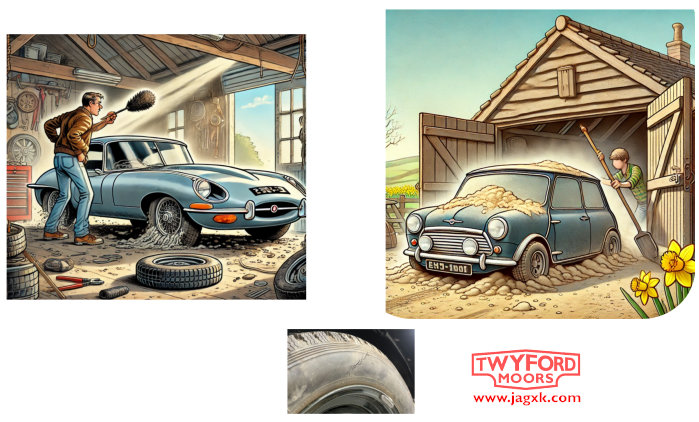Over future editions I will share further articles on the world of classic cars. I hope to give a broad and varied view of the classic car scene. If you would like to read about anything in particular, please email me at harry@jagxk.com

Spring has now sprung, and many will be bringing their classic cars out after their winter hibernation. Although how you store your car over the winter months is hugely important and can significantly reduce the work required when getting it back on the road, there are still a few essential checks to carry out before setting off this spring. This is particularly crucial if you won’t be having the car checked over by a specialist or getting an MOT before driving.
The first step is to ensure your battery is fully charged before attempting to start the car. This is especially vital if you haven’t kept it topped up over the winter months. That first start-up can put a significant strain on your battery, and if it’s already low, it could be the final straw. While the battery is charging, you can check your fluid levels and other components. Inspect your oil, coolant, and, most importantly, brake fluid levels. If any are low, try to identify potential leaks before topping up—this is particularly critical for braking performance. On that note, it’s advisable to give the brake pedal a firm pump to check for any leaks.
Next, examine your hoses, seals, and other rubber components to ensure none are excessively perished or split.
Finally, give your tyres a thorough inspection. Ensure they are inflated to the correct pressure, have good tread across the entire surface, and aren’t perished or cracked. Tyres are often overlooked, yet they are the only thing connecting you to the road.
Once these checks are complete and your battery is charged, switch on the ignition and allow the fuel system to prime. Check for any fuel leaks, then go through the rest of your electrical systems, paying particular attention to brake lights and indicators.
Now it’s time to start the car. With the vehicle running outdoors, let it warm up gently and check for any leaks. This is also a good opportunity to move the car slowly back and forth to test the brakes, steering, and suspension.
This is by no means an exhaustive list, but I hope it serves as a useful guide to get you started. If in any doubt, contact a trusted specialist to check your car. Drive safely and enjoy your classic car this spring!